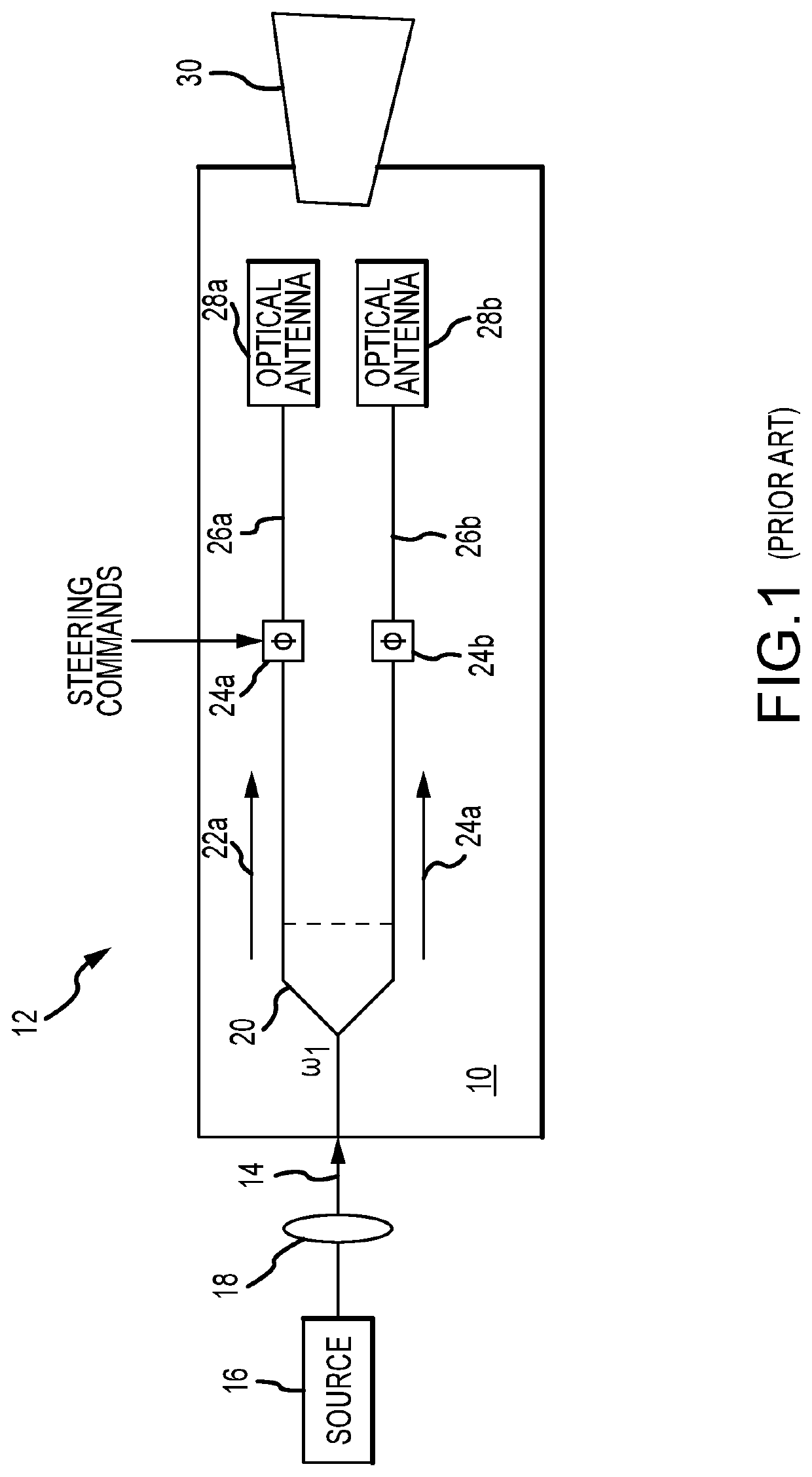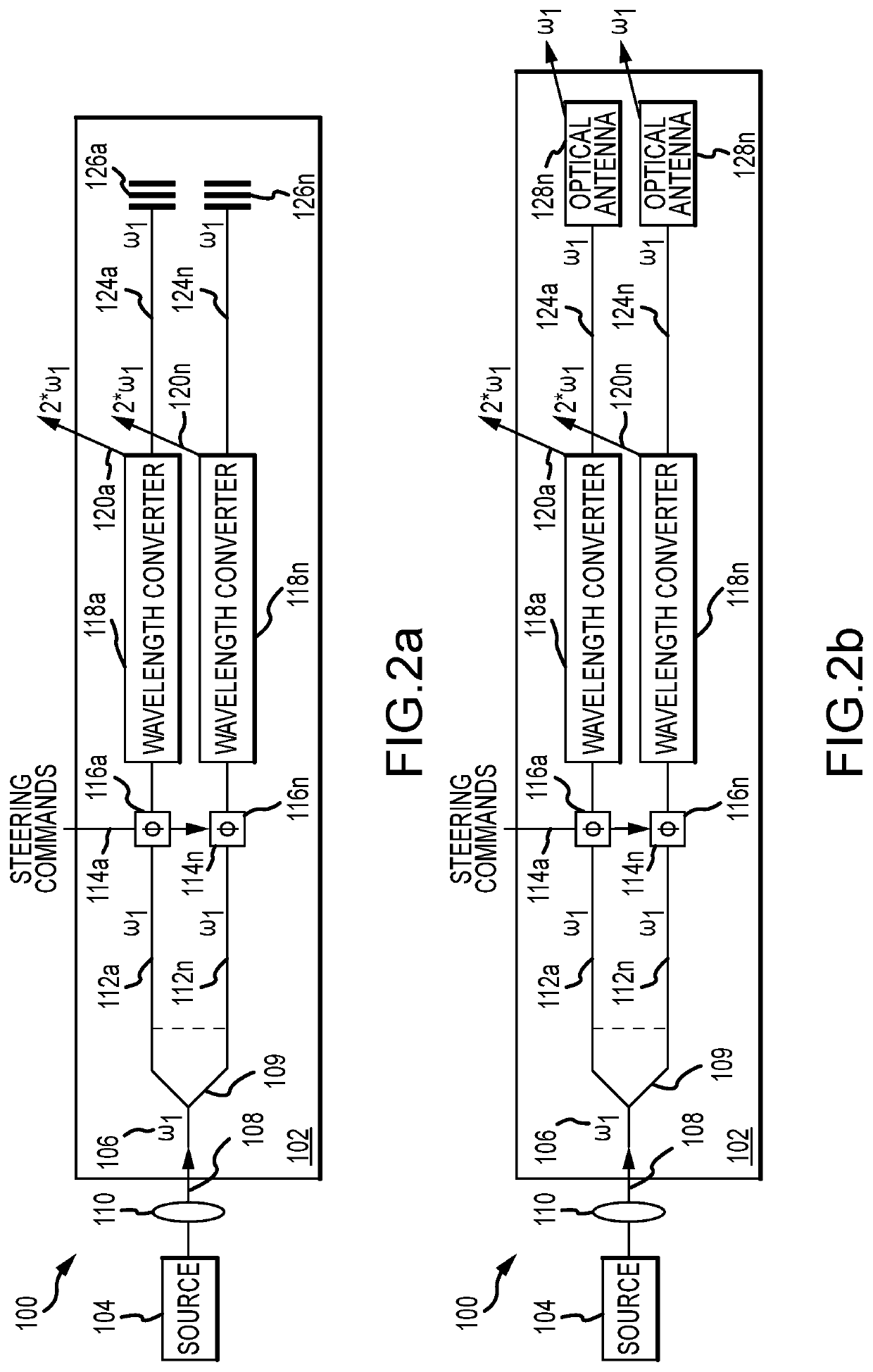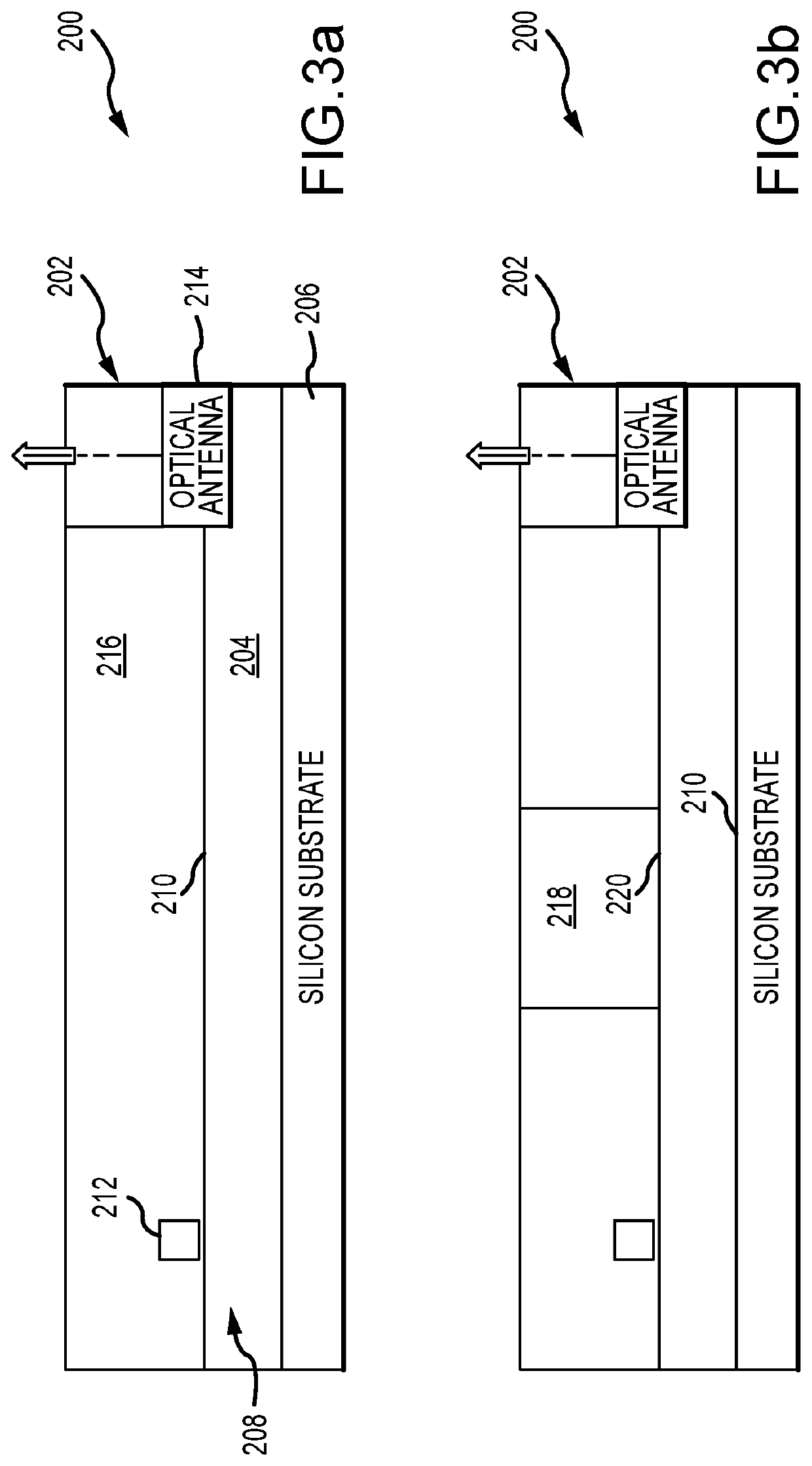Monolithically integrated wavelength converted photonic integrated circuit (PIC) and hybrid fabrication thereof
a photonic integrated circuit and monolithic technology, applied in non-linear optics, instruments, optics, etc., can solve the problem of difficult to realize all of them on a single chip, and achieve the effect of enhancing non-linear susceptibility
- Summary
- Abstract
- Description
- Claims
- Application Information
AI Technical Summary
Benefits of technology
Problems solved by technology
Method used
Image
Examples
Embodiment Construction
[0027]The present invention describes a monolithically integrated wavelength converted photonic integrated circuit (PIC) to provision optical bands not optimally supported by the underlying PIC. In other words, the PIC may be transmissive at these optical bands but the transmission percentage is too to low photonically process, route and transmit the optical signal without unacceptable losses.
[0028]As previously stated, photonic integrated circuits have been fabricated from a variety of material systems, including electro-optic crystals such as lithium niobate, silica on silicon, SOI, chalcogenides, various polymers, and semiconductor materials which are used to make semiconductor lasers such as GaAs and InP. These materials support different but limited transmission bands. The edges of the transmission band are defined by a specified minimum cut-off transmission e.g. 50%. Within the transmission band, losses due to absorption and reflection are small enough that transmission exceed...
PUM
| Property | Measurement | Unit |
|---|---|---|
| wavelength | aaaaa | aaaaa |
| wavelength | aaaaa | aaaaa |
| wavelength | aaaaa | aaaaa |
Abstract
Description
Claims
Application Information
 Login to View More
Login to View More - R&D
- Intellectual Property
- Life Sciences
- Materials
- Tech Scout
- Unparalleled Data Quality
- Higher Quality Content
- 60% Fewer Hallucinations
Browse by: Latest US Patents, China's latest patents, Technical Efficacy Thesaurus, Application Domain, Technology Topic, Popular Technical Reports.
© 2025 PatSnap. All rights reserved.Legal|Privacy policy|Modern Slavery Act Transparency Statement|Sitemap|About US| Contact US: help@patsnap.com



